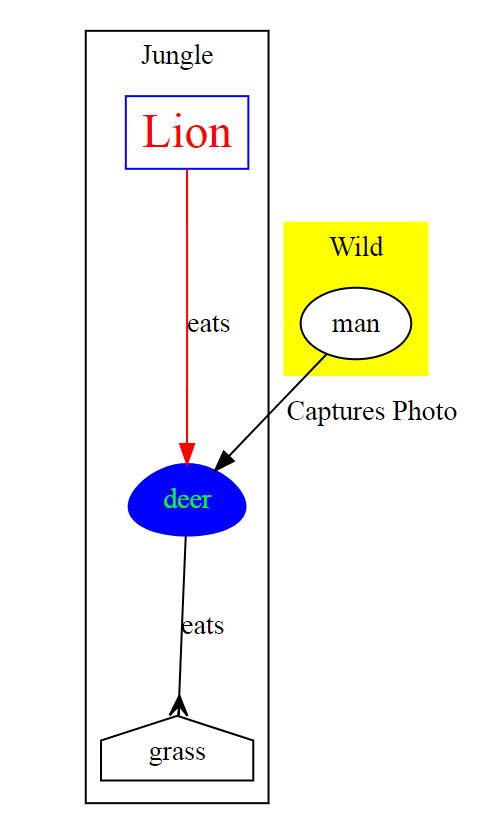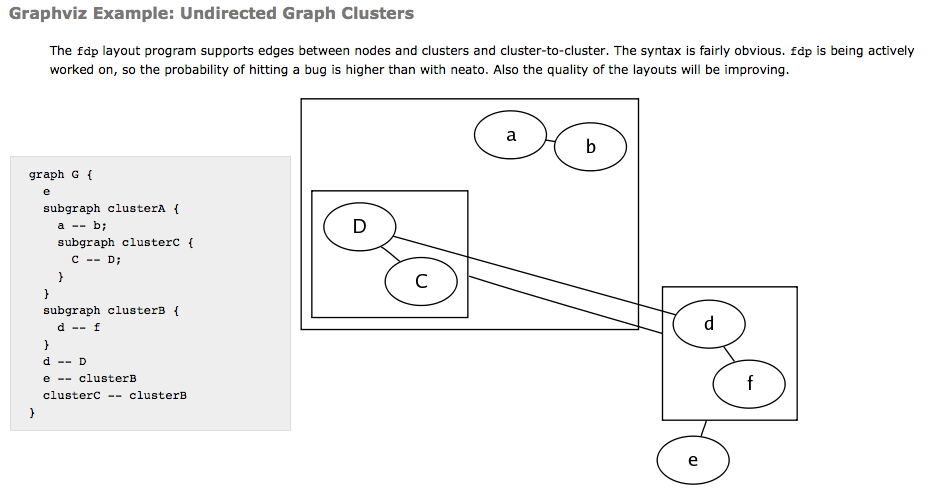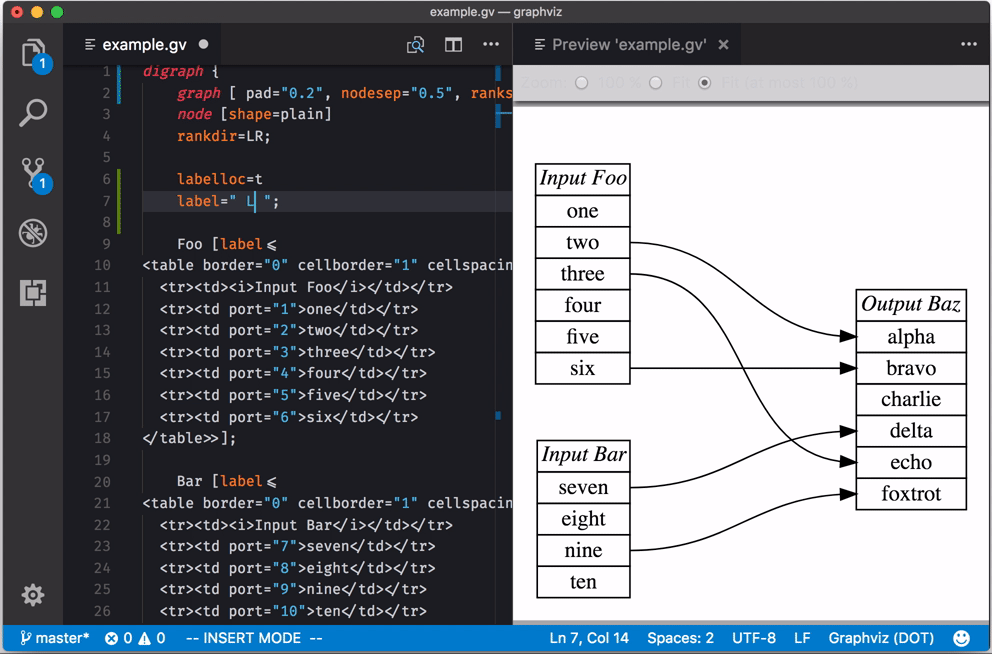
The first example creates a small graph of five nodes and varies the size and color of the nodes. Feature Examples # Node Width, Font, and Color #
GRAPHVIZ GRAPH FULL
"sfdp": The sfdp engine is a multiscale version of "fdp" for large graphs.įor the full list of supported attributes and values, see the Graphviz Attribute Documentation. "patchwork": The patchwork engine draws clustered graphs using a squarified treemap layout. "osage": The osage engine draws clustered graphs.  "fdp": The fdp engine creates spring model layouts similar to "neato". This engine is useful for graphs with cyclic structures, such as telecommunication networks. "circo": The circo engine creates a circular layout. "twopi": The twopi engine creates radial layouts with nodes placed in concentric circles. "neato": The neato engine creates spring model layouts. The engine attempts to create groups without edge overlapping. "dot": The dot engine creates hierarchical or layered directed graphs. This indicates that this subgraph should be nested within that parent subgraph.Ī string indicating the layout engine to use. :parent can be added only to subgraphs with the value set to the ID of another subgraph. :subgraph cannot be recursively defined. If you want to only have a subset of the subgraphs be clusters, you should set the root key :clustered to boolean_false and prepend "cluster_" to the subgraph ID that you would like to be clusters.
"fdp": The fdp engine creates spring model layouts similar to "neato". This engine is useful for graphs with cyclic structures, such as telecommunication networks. "circo": The circo engine creates a circular layout. "twopi": The twopi engine creates radial layouts with nodes placed in concentric circles. "neato": The neato engine creates spring model layouts. The engine attempts to create groups without edge overlapping. "dot": The dot engine creates hierarchical or layered directed graphs. This indicates that this subgraph should be nested within that parent subgraph.Ī string indicating the layout engine to use. :parent can be added only to subgraphs with the value set to the ID of another subgraph. :subgraph cannot be recursively defined. If you want to only have a subset of the subgraphs be clusters, you should set the root key :clustered to boolean_false and prepend "cluster_" to the subgraph ID that you would like to be clusters.  :clustered is not supported because it applies to the whole graph and not a subgraph. :directed is not supported because it applies to the whole graph and not a subgraph. The default is boolean_true, i.e., clustered.Ī relation with an identifier followed by a graph definition ( :node, :edge, :attribute, :node_attribute, :edge_attribute). The default value is boolean_true, i.e., directed.Ī boolean ( boolean_true or boolean_false) indicating whether the subgraphs in the graph should have their ID prepended with cluster_ so that the subgraphs are each rendered in a bounding box. These attributes serve as the default for all edges in the graph.Ī boolean ( boolean_true or boolean_false) indicating whether the graph is directed or undirected. These attributes serve as the default for all nodes in the graph.Ī binary relation of edge attributes as ( attribute, value). These attributes serve as the default for the graph/subgraphs.Ī binary relation of node attributes as ( attribute, value). from and to need to match an identifier in the :node relation.Ī ternary relation of node attributes as ( node_id, attribute, value), where node_id matches an identifier in the :node relation.Īn arity-4 relation of edge attributes as ( from, to, attribute, value), where ( from, to) matches an identifier pair in the :edge relation.Ī binary relation of graph attributes as ( attribute, value).
:clustered is not supported because it applies to the whole graph and not a subgraph. :directed is not supported because it applies to the whole graph and not a subgraph. The default is boolean_true, i.e., clustered.Ī relation with an identifier followed by a graph definition ( :node, :edge, :attribute, :node_attribute, :edge_attribute). The default value is boolean_true, i.e., directed.Ī boolean ( boolean_true or boolean_false) indicating whether the subgraphs in the graph should have their ID prepended with cluster_ so that the subgraphs are each rendered in a bounding box. These attributes serve as the default for all edges in the graph.Ī boolean ( boolean_true or boolean_false) indicating whether the graph is directed or undirected. These attributes serve as the default for all nodes in the graph.Ī binary relation of edge attributes as ( attribute, value). These attributes serve as the default for the graph/subgraphs.Ī binary relation of node attributes as ( attribute, value). from and to need to match an identifier in the :node relation.Ī ternary relation of node attributes as ( node_id, attribute, value), where node_id matches an identifier in the :node relation.Īn arity-4 relation of edge attributes as ( from, to, attribute, value), where ( from, to) matches an identifier pair in the :edge relation.Ī binary relation of graph attributes as ( attribute, value). 

KeyĪ unary relation of node_id identifiers (usually strings or integers) that represent the node IDs.Ī binary relation of edges, represented as ( from, to) pairs of node IDs. This section gives an overview of the parameters that can be added to the graph module,įollowed by a set of examples for drawing different graphs. Graphviz provides a variety of parameters used to configure the graph visualization.








 0 kommentar(er)
0 kommentar(er)
